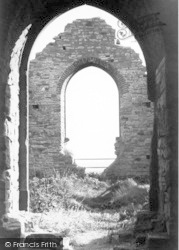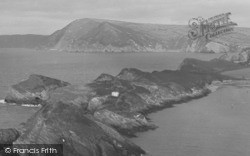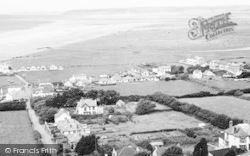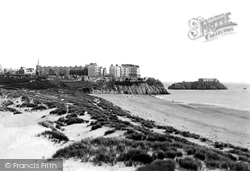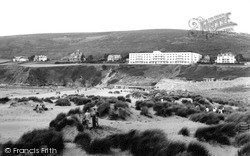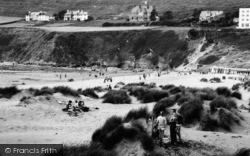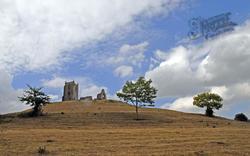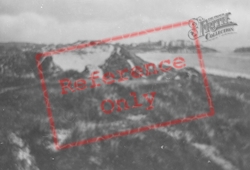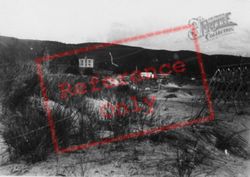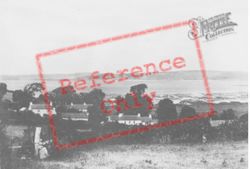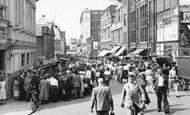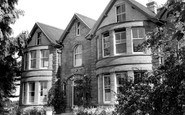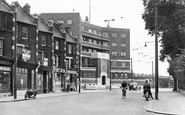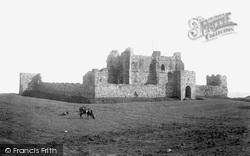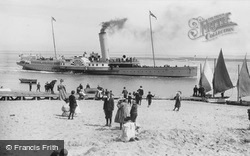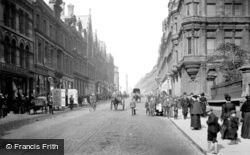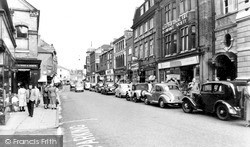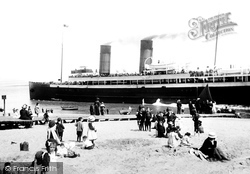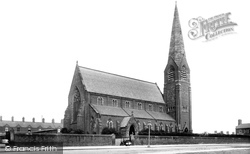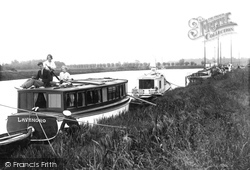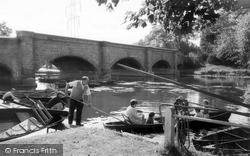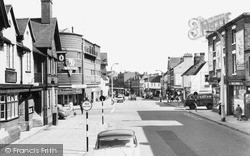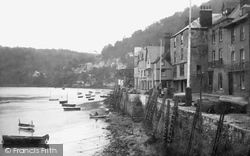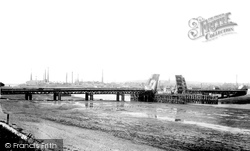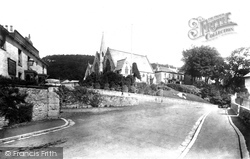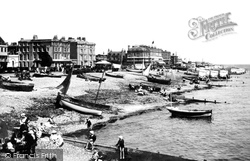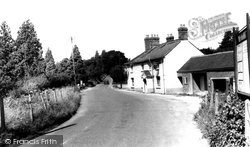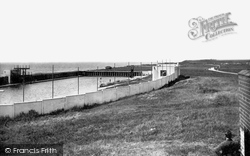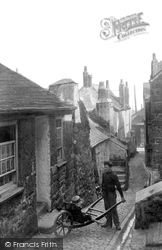Places
15 places found.
Those places high-lighted have photos. All locations may have maps, books and memories.
- Burrow, Somerset (near Minehead)
- Burrow, Devon (near Broadclyst)
- Burrow, Somerset (near Ilminster)
- Burrow, Devon (near Sidmouth)
- Lower Burrow, Somerset
- Nether Burrows, Derbyshire
- Nether Burrow, Lancashire
- Burrows Cross, Surrey
- The Burrows, Dyfed
- Higher Burrow, Somerset
- Over Burrow, Lancashire
- Over Burrows, Derbyshire
- Three Burrows, Cornwall
- Two Burrows, Cornwall
- Burrows, The, Dyfed (near St Davids)
Photos
32 photos found. Showing results 21 to 32.
Maps
238 maps found.
Books
2 books found. Showing results 25 to 2.
Memories
284 memories found. Showing results 11 to 20.
Burrow Hill Today
Burrow Hill School is now derelict. It closed in 1998 and I have just walked past the boarded-up site this afternoon. Although I have lived in Frimley Green since 1993 and seen one of its main buildings from within a ...Read more
A memory of Frimley Green by
Denham Court
I was placed in Denham Court on 20th February 1953 at the age of 12 years (just five days before my thirteenth birthday, which I recall was not even acknowledged by anyone) when it was a Children's Home. The Matron and her husband were ...Read more
A memory of Denham in 1953 by
Cofton Farm Camp Site
'Eee, when I were a lad'....... in the 1950's my dad and I would get the bus from Exeter to Dawlish and camp for a week at Cofton Farm, using a little WWII army-surplus 2-man ridge tent. My elder brother was in The Scouts, ...Read more
A memory of Starcross by
Happy Youth
I first found out about when I moved to Great Horton in Bradford about 1952. I met a boy called Philip Tempest who lived in a house near by, we became life long friends. His parent took me on holiday with them to a cottage they owned ...Read more
A memory of Nesfield in 1950 by
Davidson Road Secondary School
I remember the school very well, I left in 1953. Does anyone recall some of the teachers names such as Mr Bonner, Headmaster, Mr Burrows, Science Teacher, Mr Chambers, PT and Geography. The school captain was Phil ...Read more
A memory of Croydon in 1950 by
Balidon Fond Memories
I was born on 15th August 1954 at Balidon. I am sure my father told me they had a fishpond as you came into the driveway at the front of the building. When he first came to see me, he went to open the door of a car he must ...Read more
A memory of Yeovil in 1954 by
My Father Bob Barnard Lived In Overton As A Boy. His Words Are Below:
I was born on 29th November 1928, and lived in Southsea in 1939, and during August my parents, little sister, and I went for a short holiday by coach to stay with an Aunt and ...Read more
A memory of Overton in 1940
Lucien Road
I lived in Lucien Road for sixty five years until two years ago. My memories start when I was about five with my dear old dad taking me out on his barrow to sell firewood - I thought it was great fun. Also, my mum taking me to haylocks ...Read more
A memory of Tooting in 1948 by
Early Years In Park Road
Born in 1947 to Ted & Cred Fowles, I lived in 3 Park Road until 1955 when I moved down the hill to Southsea. I started Tanyfron primary school in 1951 and went on to Penygelli Secondary school, Coedpoeth, in 1958. ...Read more
A memory of Tanyfron by
Licensed Game Butcher
Our gt uncle Edward Cope Statham, born in Barrow in Furness, was a licensed game butcher in Longton. He is on the 1901 census, aged 24, as lodging in Trentham Road so don't know if the shop was there too but we do have a ...Read more
A memory of Longton in 1900 by
Captions
124 captions found. Showing results 25 to 48.
The extensive remains of Piel Castle date from the early 14th century, and are located on Piel Island to the south of Barrow in Furness.
It entered service on the Barrow-Fleetwood run in April 1908.
Over on the left outside Harkers are two large hampers on a barrow. Harkers might be getting a visit from a salesman.
The Countryside Library was next door - genteel libraries charged borrowers. Boots the Chemists' library (behind us, at the corner of Market Street) was upstairs, approached by a wooden staircase.
The highly skilled workforce is still here; it is the scale of operations that has been reduced, as the industrial complexes in Barrow-in-Furness have slimmed down to remain competitive and efficient
It was also possible to sail to Douglas from Barrow, Silloth, Whitehaven and Glasgow.
During the time leading up to the First World War (1914-18), a number of food shortages, popularly referred to as famines, hit Barrow-in-Furness.
The name 'Lavengro' is the title of a book by George Borrow, the Victorian writer and linguist: he was born at East Dereham in Norfolk.
Even today it is still possible to see the large sign built into the bricks of the houses that made up this hospital: it reads 'Barrow Hospital supported by voluntary contributions'.
Barrow-upon-Soar lies next to Charnwood Forest amongst fine water meadows. The village's assets attract visitors and shoppers, whilst the River Soar brings in canal cruisers.
The rural nature of this scene is emphasised by the cart just visible inside the barn, and the boy with his barrow about to cross the road.
Michael Palladino used to go round the town with his ice-cream barrow and charged a penny for a wafer and just a halfpenny for a cup.
Bayards Cove, which takes its name from the French 'bayart', meaning 'barrow', was most famously used as a set for the television series 'The Onedin Line'.
The public opening was on 30 June 1908, and the mayoress of Barrow, Mrs T F Butler, performed the ceremony.
It was owned by the Borwick family - Mr Borwick lost all his clothes in the fire, and had to borrow replacements.
The gap in the buildings marks the south side of the green, down the middle of The Steyne, laid out in 1807; it copied that in Brighton and borrowed its name.
Built in 1899 for the General Steam Navigation Co, the paddler was purchased by the Furness Railway in 1907 and entered service on the Barrow- Fleetwood run in April 1908.
On the downlands close by are a considerable number of prehistoric barrows - burial grounds of some of the earliest inhabitants.
It was built to bring iron ore to the deep-water harbour here before Barrow Docks were built. The yachts are on the site of the terminus.
Protected by the enclosing reef of Walney Island, Barrow flour- ished as a major shipbuilding centre in the 19th and early 20th centuries.
Just beyond, joining Third and New Courts of St John's College, is the Bridge of Sighs, its Gothic design unashamedly borrowed from the covered bridge of the same name in Venice.
Following the First World War, many changes took place once again around Britain, and in Barrow and Furness in particular.
The young man holding the wheelbarrow worked for a local grocer and used the barrow for delivering goods, or, as can be seen here, for giving a local youngster a jaunt.
Protected by the enclosing reef of Walney Island, Barrow flourished as a major shipbuilding centre in the 19th and early 20th centuries.
Places (15)
Photos (32)
Memories (284)
Books (2)
Maps (238)


